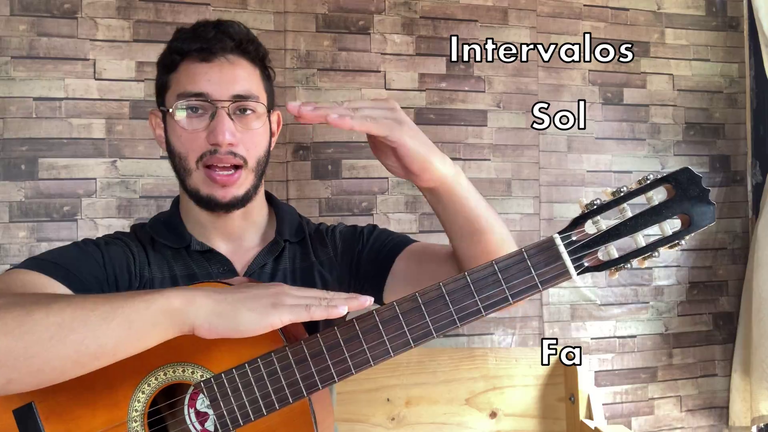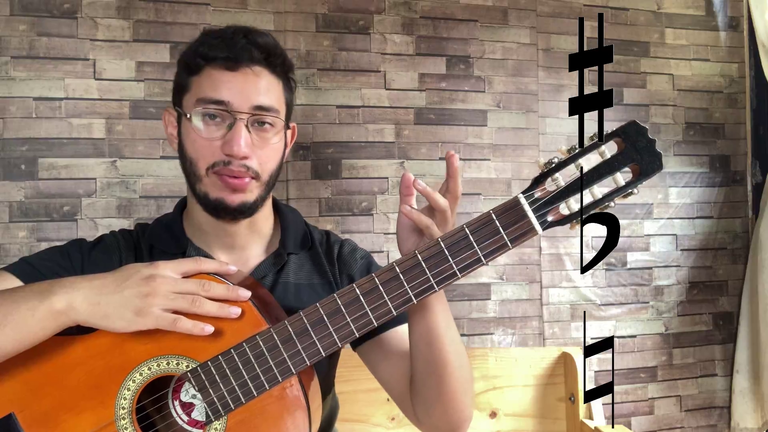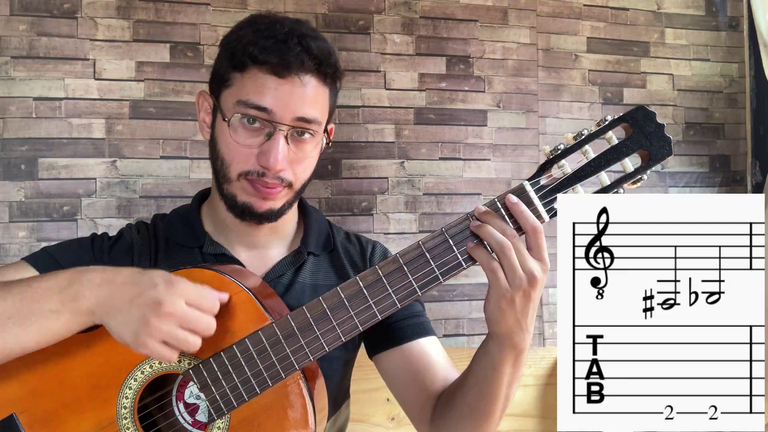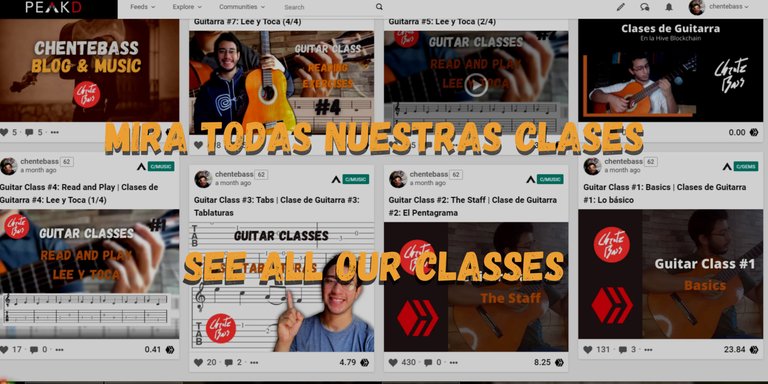Míralo en Youtube
Watch it on Youtube
ESPAÑOL
Hola a todos y bienvenidos una vez más a nuestras clases de guitarra. El día de hoy hablaremos sobre un tema muy importante para todo guitarrista y cualquier músico, de hecho.
Comprender las alteraciones es fundamental dentro del lenguaje musical y por supuesto, nos ayuda a descifrar mucho mejor el sentido de una partitura.
Estos además dan estructura y la cambian en función de las intenciones del compositor para transmitir las sensaciones deseadas a través de diferentes tipos de intervalos.
ENGLISH
Hello everyone and welcome once again to our guitar lessons. Today we will talk about a very important topic for every guitarist and any musician, in fact.
Understanding alterations signs is fundamental within the musical language and of course, it helps us to decipher much better the meaning of a score.
They also give structure and change it according to the composer's intentions to transmit the desired sensations through different types of intervals.

Pero... ¿Qué son los intervalos?
Básicamente, se pueden definir como una distancia. La distancia que existe entre una nota y otra. ¿Recuerdan que las notas tienen altura? Bueno, un intervalo es la forma en que medimos esa diferencia de altura entre dos notas.
Hay dos medidas básicas que debemos conocer ahora, tono y semitono.
"Naturalmente", las notas poseen un tono de distancia entre sí. A excepción de la Si - Do, Mi - Fa. El intervalo entre estos últimos es de un semitono, que es la mitad de un tono.
But... What are intervals?
They can be defined as a distance. The distance that exists between one note and another. Remember that notes have pitch? Well, an interval is a way we measure that difference in pitch between two notes.
There are two basic measurements we should know now, tone and semitone.
"Naturally", notes possess one tone of distance from each other. Except for Si - Do, Mi - Fa. The interval between the latter is one semitone, which is half a tone.

Las alteraciones modifican esos intervalos, pudiendo aumentar o disminuir la altura de las notas.
Los símbolos que usamos para esto son tres:
- Sostenido (#), que aumenta la altura de las notas un semitono.
- Bemol (♭), cuyo efecto es el contrario al del sostenido. Es decir, disminuye la altura un semitono.
- Becuadro (♮), que anula el efecto de los otros dos, devolviendo la nota a su estado natural.
Alterations modify these intervals and can increase or decrease the pitch of the notes.
The symbols we use for this are three:
- Sharp (#), which increases the pitch of the notes by one semitone.
- Flat (♭), whose effect is the opposite of sharp. That is, it decreases pitch by one semitone.
- Natural (♮), which cancels the effect of the other two, returning the note to its natural state.

Enarmonía
Con enarmonía nos referimos a la propiedad que tienen dos sonidos cuyos nombres son distintos, pero su sonido es igual o similar.
En la guitarra por ejemplo, si presionamos el segundo traste de la 6ta cuerda, el sonido que se reproducirá lleva los nombres de Fa# y Sol♭. Pero este depende del contexto en el que nos encontremos, es decir, la tonalidad o el acorde.
Enharmony
By enharmony, we refer to the property of two sounds whose names are different, but whose sound is the same or similar.
On the guitar for example, if we press the second fret of the 6th string, the sound that will be reproduced carries the names Fa# and Sol♭. But this depends on the context in which we find ourselves, i.e. the key or the chord.


La escala cromática
Es una sucesión de notas que avanza en función de semitonos. Es decir, cada nota que hagamos estará a un semitono de distancia de la nota que le precede.
Este estudio puede ser útil para entender la dinámica de estos signos.
The chromatic scale
It is a succession of notes that advances according to semitones. That is to say, each note that we make will be one semitone away from the note that precedes it.
This study can be useful to understand the dynamics of these signs.

Esto es todo por hoy. Recuerda que puedes dejarme tus dudas y comentarios.
Deja tu voto y comparte con tus amigos :D
¡Muchas gracias!
That's all for today. Remember that you can leave me your doubts and comments.
Leave your vote and share with your friends :D
Thank you very much!

▶️ 3Speak
The rewards earned on this comment will go directly to the person sharing the post on Twitter as long as they are registered with @poshtoken. Sign up at https://hiveposh.com.
Congratulations @chentebass! You have completed the following achievement on the Hive blockchain and have been rewarded with new badge(s) :
Your next target is to reach 150 posts.
You can view your badges on your board and compare yourself to others in the Ranking
If you no longer want to receive notifications, reply to this comment with the word
STOPTo support your work, I also upvoted your post!
Check out the last post from @hivebuzz:
Hola @chentebass
Muy bien, me encanta tu idea. Es contenido muy útil, y hoy en día, cuando todos corren a algún lado y no tienen tiempo, escuchar videos es más fácil que leer el texto. Aunque con el texto se debe combinar, claro. Muy interesante para estudiantes jóvenes (pero también mayores). Suerte con el proyecto!!
¡Muchas gracias por tu comentario! :D
Sí, pensé en que podía compartir un poco de lo que he aprendido estos años. Nunca se sabe a quién le pueda ser muy útil. En todo caso, esta es la última de mis clases y se me olvidó agregar el link para todas las anteriores jeje
Los programas de edición aún son un reto para mí. Pero ya les estoy "agarrando el hilo".
Oh, pues no lo sabia que ya tenias clases anteriores! Tengo que estar mas al dia con tus publicaciones jejeje.
¡Oh, vaya! Espero ser digno de tal consideración jeje gracias ,☺️
Por cierto, yo he agregado el link a todas las clases 😎